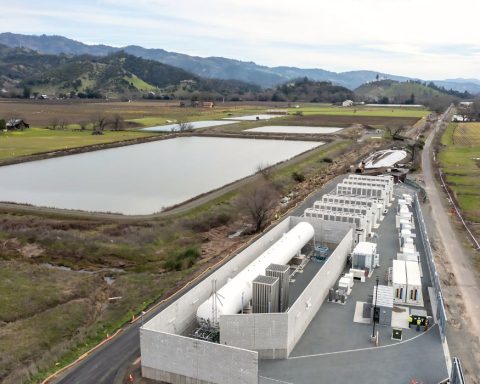From Pampers to pavement
The average baby will go through more than 5,000 disposable diapers – 92% of which end up in landfills. But NappiCycle is finding new uses for soiled nappies. The Welsh company turns used diapers into carbon fibres that bind with asphalt to create roads twice as durable as conventional surfaces. Rob Poyer, a director of NappiCycle, gives the government much of the credit: “The Welsh government setting such high recycling targets has produced some amazing innovation,” and £180,000 in funding helped transform 100,000 diapers into a 2.2-kilometre stretch of road.
Norway dreams of electric gold
Having won the most medals at the 2022 Winter Olympics, Norway is now vying for another record: the first country to make the shift to fully electric vehicles. In 2021, 65% of new cars sold in Norway were EVs, up from 50% the year before. Only 8% of new vehicles ran only on gasoline or diesel; the rest were hybrids. Why is oil-producing Norway all-in on electric? The Norwegian EV Association cites the country’s high gasoline prices, the elimination of sales taxes and toll fees for EVs, and raising taxes on conventional cars as reasons EVs have taken off.
Coming to a table near you: Meat made from air
“Making meat doesn’t have to mean deforestation, factory farming, or greenhouse gases harming our planet,” claims California start-up Air Protein. The company has raised more than US$30 million to develop what it calls the first “carbon-negative, earth-positive protein source.” The recipe: mix high-protein bacteria in a fermentation tank with carbon dioxide, oxygen, water and minerals. Within hours, you have a protein-rich flour with twice the amino acids of soybeans. Air Protein is targeting various products but will enter the market with faux chicken. Where’d they get the idea? The process was first proposed by NASA in the 1970s to feed astronauts.
Ammonia awaits its moment in the sun (or wind)
You know ammonia as a household cleaning product – but the pungent compound of nitrogen and hydrogen is also a fertilizer, a solvent and an ingredient in food and medicine. Now scientists are studying “green ammonia” – produced using low-carbon energy – as a versatile fuel for power plants and motor vehicles. With wind and solar costs tumbling, green ammonia could find a role on farms as a fertilizer, an affordable fuel and an energy-storage medium more efficient than batteries. “For deep decarbonization of agriculture, you switch to green ammonia,” says University of Minnesota energy researcher Michael Reese, who’s running a demonstration project in Minnesota.
Solar will power Glasgow Airport’s net-zero pledge
How do you make air travel more sustainable? Glasgow Airport, the U.K.’s ninth-busiest airport by passenger volume, has just broken ground for a 30-acre, 15-megawatt solar farm that should go into operation next year. The airport already buys its electricity from 100% renewable sources, but building its own generating capacity will enable it to control its future as it replaces its service fleet with electric vehicles and overhauls its parking areas with charging stations. Glasgow Airport will also sell energy to its neighbours. While the airport hasn’t yet said how it plans to tackle Scope 3 emissions (those of planes landing and taking off in Glasgow’s airspace), it does hope to be a testbed for hydrogen and electric flights.







